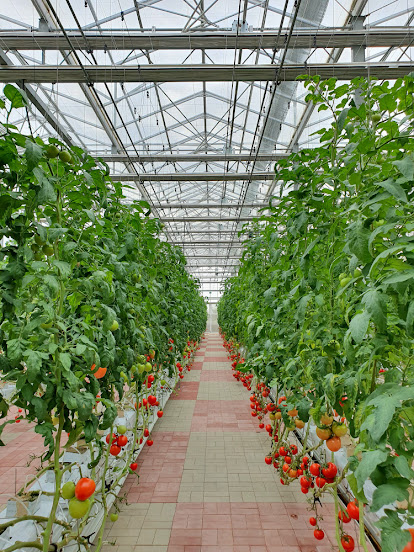In modern greenhouse cultivation, LED grow lights do more than illuminate - they influence plant growth, height, and canopy density. Harnessing photomorphogenesis, horticulturalists achieve precise control, optimizing conditions for better yields.
The Science of Photomorphogenesis: A Brief Overview
Photomorphogenesis, which includes processes like germination, flowering, and general growth, describes how plants react to light. Different light wavelengths are crucial in causing particular physiological reactions in plants. With their unmatched control over the light spectrum, LED grow lights enable gardeners to modify the wavelengths emitted to affect plant behavior.
Controlling Plant Height with Light
By enabling growers to control plant height, LED systems are fundamentally changing greenhouse agriculture. Horticulturists can control internodal spacing and elongation by adjusting the blue-to-red light ratio. Red light promotes elongation, while blue light promotes shorter, bushier growth. Growers can produce plants that are more compact or that strive for more vertical growth by changing the balance of these wavelengths.
Influencing Canopy Density for Optimal Light Penetration
The structure and thickness of a plant's leaf, known as canopy density, is crucial for controlling light distribution and penetration inside the greenhouse. Here, LED grow lights are an important tool for achieving even lighting distribution over the canopy. Growers may promote healthy development and lower their risk of illness by carefully arranging and controlling LED lights to make sure every leaf receives the light required for photosynthesis.
Customization through Light Recipes
By enabling farmers to develop customized "light recipes" for various growth phases, LED grow lights raise the bar for personalization. For instance, a higher proportion of blue light during the vegetative period might encourage vigorous root growth and rich foliage. A shift toward red light can promote robust blooming and fruiting as the plants enter their flowering stage. This adaptability makes sure that the light spectrum replicates the environmental factors essential for healthy growth.
Conclusion
Incorporating LED grow lights into greenhouse practices is revolutionizing plant nurturing and cultivation. The precision they offer in manipulating plant height and canopy density empowers growers to refine methods, fostering higher yields, healthier crops, and sustainability. Beyond illumination, LED grow lights shape the future of cultivation, with evolving plant-light insights promising even more refined techniques for greenhouse success.

Comments
Post a Comment